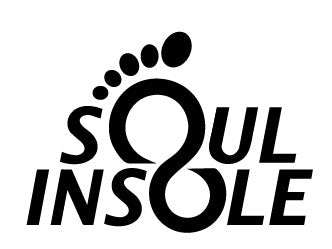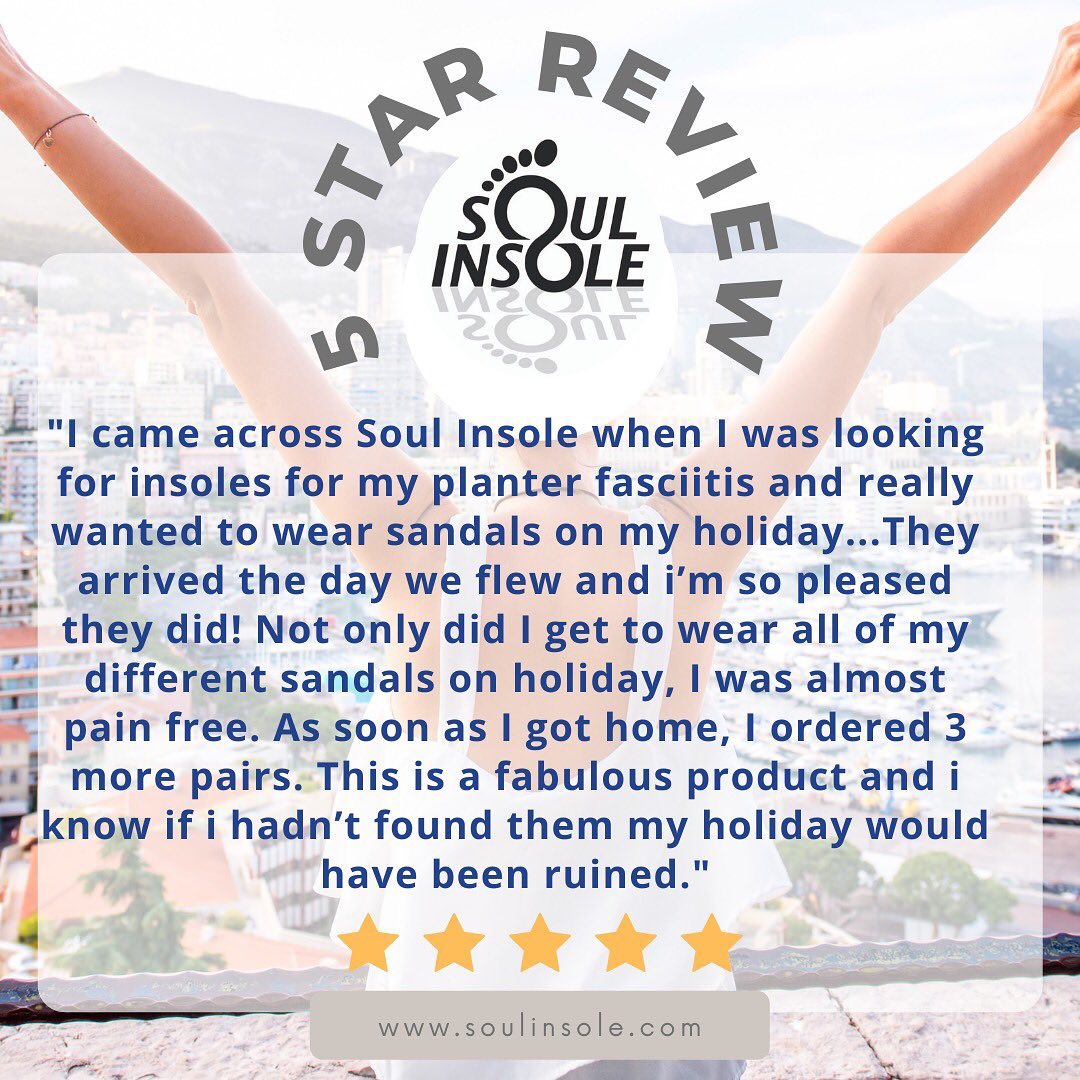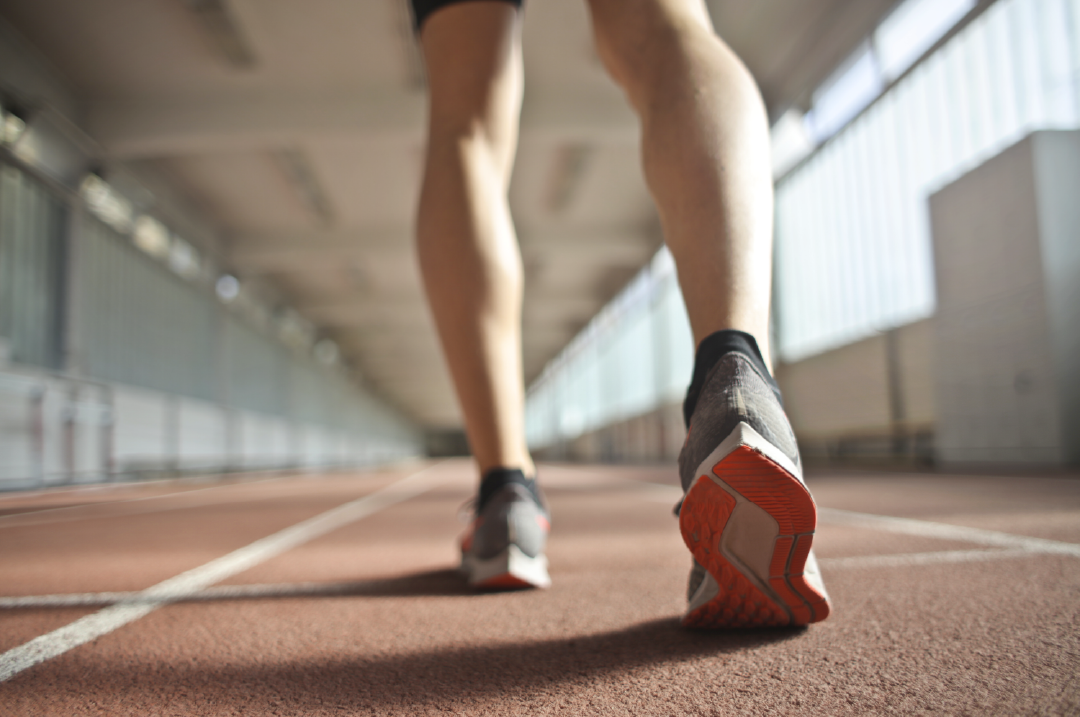
Forget paying $500 for custom orthotics. If your feet need serious help do this instead...
I want to first dive into some questions to consider and some of the main causes of foot pain that you may or may not have thought of before. If we can get to the root of the issue, it can be easier to get to the right solution for you as each person's reason for foot pain can be unique.
Where is the pain?
The most common places for pain in the feet are the heel of the foot, ball of the foot, under the arch, or at the top of the foot.
It's recommended to see your doctor to get a diagnosis.

Heel Pain is often associated with issues such as plantar fasciitis and heel spurs. Cushioning can be helpful but doesn't always get to the root of the issue. Sometimes heel pain can be related to micro-tears in the attachment point of the plantar fascia connective tissues. Keeping the arches supported with some over-the-counter insoles can stop the plantar fascia from over stretching and re-tearing again and again, thus stopping this type of heel pain. Heel spurs can also be relieved by some types of insoles - especially an insole that drops off before the heel to somewhat suspend the bone and offload pressure from the heel spur. Here's an example of this type of insole.
Ball of Foot Pain is often associated with Morton's neuroma, sesmoiditis, bunions, hammer toes and metatarsalgia.
Metatarsal pads can help to offload pressure from the ball of the foot area. They can also help to provide spacing for the case of nerve impingements.
Additionally, it can help to wear toe spacers to align the toes, providing relief for bunions, hammertoes and neuromas.

Arch pain is often associated with plantar fasciitis and over pronation and fallen arches. Please read below to learn more about fallen arches and over pronation.
Top of foot pain and joint pain is often associated with arthritis, but there are a variety of possibilities including but not limited to a high instep, over-use injury, extensor tendonitis, stress fracture, bone spurs, peripheral neuropathy, or common peroneal nerve dysfunction.
Check to make sure that the shoes that you're wearing are spacious enough in the instep. To help with arthritis, high instep, over-use injury or tendonitis, these gel arch supports are placed in the middle of the shoe underneath the arch area and can help relieve pressure in the top, instep area of the foot.
Do you have hard flooring in your house or workplace?
If the answer is YES, then it can be a good idea to always wear a pair of cushioned and supportive house shoes / house sandals. Walking barefoot on hard floors can instigate and exacerbate foot pain. It can intensify issues such as plantar fasciitis, heel pain and ball of foot pain.
We tend to spend a lot of time near the kitchen sink and stove - these are great places to put a thick cushioned floor mat to give your feet some relief while cooking and washing dishes.
Are you running/walking on concrete or cement?
Walking, running and standing on hard surfaces outside the home can cause and intensify foot pain. If you like to run or walk for exercise - find a place with dirt or grass or a track with rubber flooring.

Walking, standing and running on softer surfaces with better impact absorption will be a better choice for feet that are prone to issues. If you're working in a place that has hard flooring, try to take some breaks to sit down regularly. If this is not possible, then bring a second pair of shoes to work and switch your shoes halfway through the day. Both pairs of shoes should be high quality, supportive shoes - but every pair of shoes can fit and support in a different way, so rotating shoes can be very helpful.
What kind of shoes are you wearing? Dress shoes? High heels? Flat shoes with no support? Cushioned shoes? Hard soled shoes?
If you're wearing dress shoes or heels, the first thing to do if you're experiencing pain is to get yourself into some athletic shoes that are supportive, spacious and soft. Pointy toed shoes may look cute, but your feet won't after years of squishing them into these style of shoes.
When the tip of the big toe gets squished inward and a bunion begins to form this can affect the alignment in your feet and actually cause the arches to change the position to drop down and flatten the feet.

Are your shoes possibly too tight?
Shoes that are too tight can cause a myriad of issues including bunions and neuromas. Nerves between the metatarsal heads can get impinged and cause a lot of pain. Shoe repair stores can widen most types of shoes for you.
Do you have the ability to consciously move your toes?
Many people experience foot pain and feel that this is normal. They just try to ignore it until it is so debilitating that it cannot be ignored. In the process of ignoring the foot pain, we often cut off our neural connection to our feet and lose a bit of sensation and control over the micro movements of our feet and toes. With conscious practice of trying to move our toes up and down and out and in, we can rebuild this neural connection and start to understand what we are feeling in our feet better. You can also practice picking things up with your feet to build this connection. The better we can feel where the pain is coming from in our feet, the better we can assess what our feet need in order to be comfortable.
Do you have tight calves?
We have connective tissues, ligaments and tendons that run down the back of our legs and are intertwined and connected to the tissues, ligaments and tendons that run under the bottom of our feet. Tight calves can be associated with tightness in the plantar fascial tissues of the feet. Tightness in the tissues can be more brittle than flexible tissues. Slow, gentle stretching every day can help to prevent many injuries and encourage healing.
Do you sleep with your covers tucked in tight by your feet?
When the covers are tucked in tight, often times the feet end up in a pointed position throughout the night while you are sleeping. This pointed position means that the tissues and ligaments under the feet are in a shortened position. Over the evening, they can get comfortable being in this shortened position, then when you get up in the morning, stand up and start walking, the feet are forced into a flexed position. When the feet are in a flexed position, the tissues, tendons and ligaments under the feet are in an elongated position and stretched. It can be better to sleep with the feet in a more neutral position rather than very pointed because if this transition from the sleeping position to the standing/walking position is too abrupt, sometimes the tissues and tendons can get little micro-tears - kind of like a rubber band that has been stretched beyond it's limit. These micro-tears can be very painful and feel like a bruise under the feet - this is what a person with plantar fasciitis often experiences.
Are you arches fallen and ankles dropping inward?
This is often called over pronation. Similar to what I've just described in the previous paragraph, when the arches are in the proper position, the plantar fascial connective tissues, ligaments and tendons under the foot are in a slightly shortened position. The feet are designed to help absorb impact while walking and the arches can drop slightly when the foot hits the ground to help with this impact absorption. If the arches and ankles are dropping further than the normal range, this can overstretch the connective tissues, ligaments and tendons under the feet and cause micro-tears that become inflamed, and painful. This condition is know as Plantar Fasciitis. If the arches of the feet are in a constant state of being flattened and elongated, there is less opportunity for the feet to help to provide any impact absorption upon impact while walking or running. This position can affect all the joints up the body, ankles, knees, hips and back. It can be very helpful to wear insoles that will softly guide the arches up to their proper position. There are some incredible over-the-counter insoles that can help fallen arches at a cost of just $20-$30. Custom orthotics can cost $250-$500 and these days, they are often less helpful than some of the newer high tech memory gel arch supports. Many custom orthotics have a thin layer of cushioned foam covering a hard plastic piece. The feet aren't designed to be walking on hard plastic - so although they can help in providing arch support, they can be detrimental in that they can increase the intensity of impact while walking and running. So we suggest trying softer over-the-counter insoles first, especially if you will be doing activities like running, jumping or walking.
There are also foot exercises that you can do to strengthen the muscles in your feet and build the arch back up.
Here's a video of some foot exercises you can do.
How is your posture?
Tightening the core and tipping the hips up can improve foot alignment and help to improve fallen arches.
How is your nutrition? Are you deficient in any vitamins?
It can be helpful to go to a nutritionist and check to see if you are deficient in any vitamins. Some vitamins and herbs associated with improving certain types of foot aches and pains include magnesium, calcium, collagen and turmeric.
When's the last time you got a foot massage?
The feet appreciate massages and often respond by feeling better! If you don't have the time or don't want to spend the money to have someone else massage your feet, you can massage your feet yourself at home and roll the foot on a lacross ball, tennis ball or golf ball to assist in breaking up any scar tissue that may have build up over all the daily wear and tear that you put on you feet. You can also roll your foot over a frozen water bottle to massage and help reduce swelling. If you want to go above and beyond to pamper your feet and give them some relief, a warm epsom salt bath can do the trick.
In Conclusion...
Before jumping into spending $500 on a custom pair of insoles, there are a variety of other things to look into and try out first including exercises, nutrition, massage, cushioned mats on the hard floors, choosing to run on grass and dirt instead of asphalt, untucking the sheets, better fitting shoes and over-the-counter insoles.







